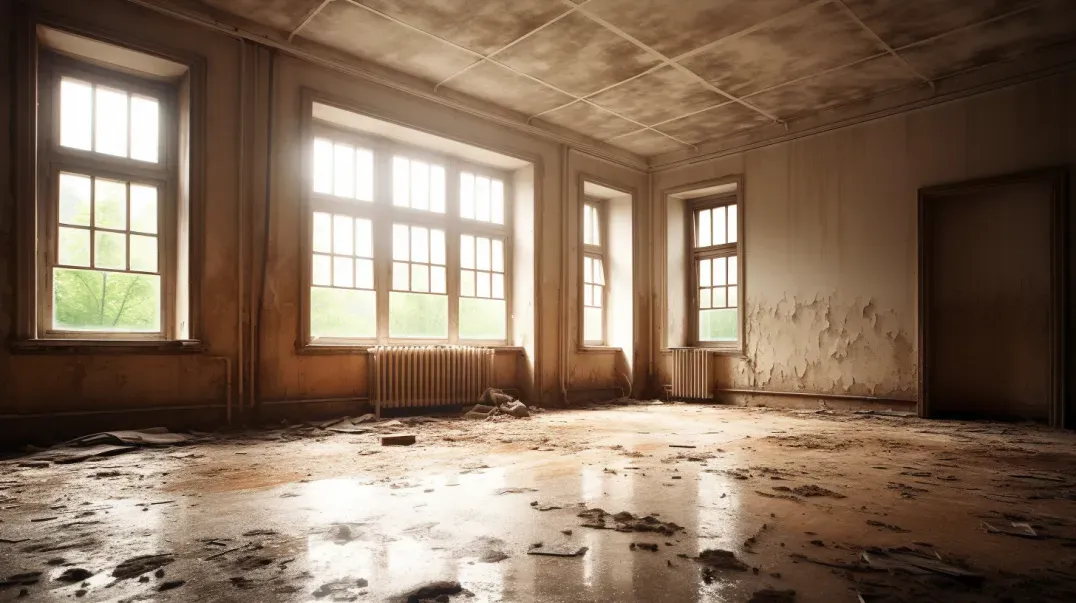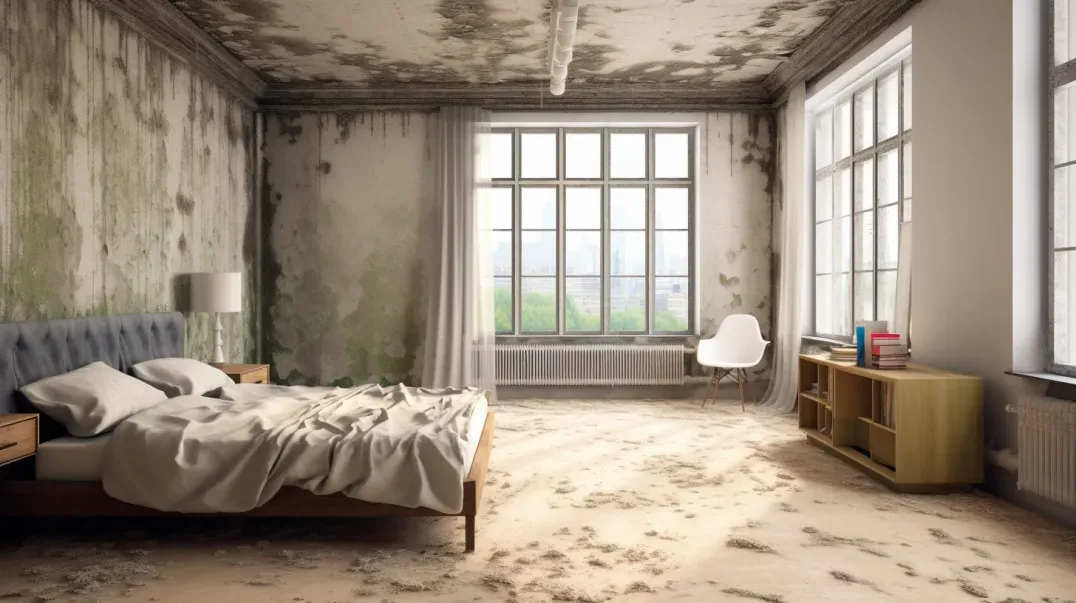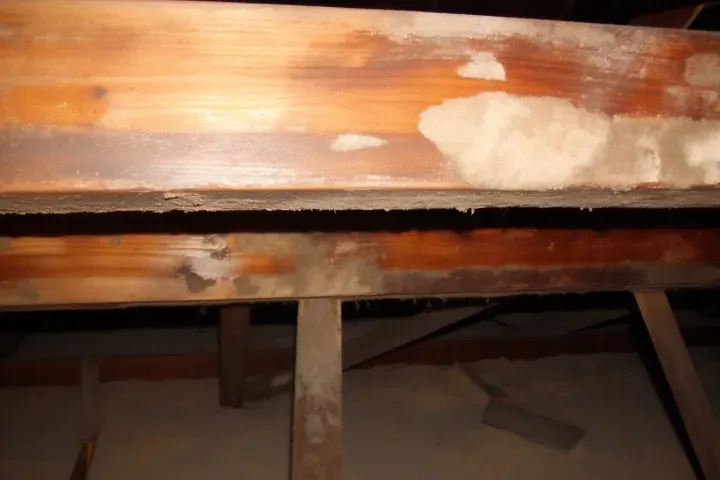Types of Mold Found in Crawl Spaces
Welcome to our comprehensive guide on a frequently overlooked yet critical aspect of home maintenance: the presence of mold in crawl spaces. Often hidden from plain sight, mold in these areas is a common occurrence, yet it remains shrouded in mystery for many homeowners. This blog post aims to demystify the enigmatic world of crawl space mold, shedding light on its causes, implications, and the vital importance of accurate identification for effective treatment.
Mold in crawl spaces isn't just a cosmetic issue; it's a silent intruder that can have far-reaching impacts on both the structural integrity of your home and the health of its inhabitants. Understanding the types of mold that thrive in these hidden environments is crucial for implementing the right treatment strategies. In this post, we'll explore the various factors that contribute to mold growth in crawl spaces, the potential risks it poses, and why recognizing different mold types is the key to safeguarding your home and health.
Join us as we delve into the world beneath your feet, offering expert insights and practical advice to help you effectively tackle the challenge of mold in crawl spaces. Whether you're a concerned homeowner, a DIY enthusiast, or simply seeking to expand your knowledge, this guide is designed to equip you with the information you need to identify, understand, and effectively address mold issues in your crawl space.
Why Mold Grows in Crawl Spaces
Mold growth in crawl spaces is a common yet often misunderstood problem in many homes. Understanding why mold thrives in these hidden areas is crucial for effective prevention and treatment. This section delves into the science behind mold growth in crawl spaces, highlighting the conditions that make these areas a hotspot for mold proliferation.
Ideal Conditions for Mold Growth
Mold, a persistent and resilient organism, requires specific conditions to flourish. In crawl spaces, the convergence of humidity, temperature, and other environmental factors creates a perfect breeding ground for mold. Let's break down these conditions:
- Humidity: Mold thrives in moist environments. Crawl spaces, often exposed to the earth, naturally attract moisture, creating an ideal setting for mold growth. High humidity levels, especially above 60%, significantly increase the risk of mold development.
- Temperature: Mold grows best in warm temperatures, typically between 60°F and 80°F (15°C to 27°C), a common temperature range found in many crawl spaces.
- Other Factors: Limited sunlight, stagnant air, and organic materials (like wood and insulation) present in crawl spaces also contribute to mold growth. These factors, combined with moisture and warmth, create an environment where mold can thrive undetected.
Common Sources of Moisture in Crawl Spaces
Identifying the sources of moisture in crawl spaces is key to controlling mold growth. Common culprits include:
- Leaks: Plumbing leaks, whether from pipes or fixtures, can introduce significant moisture into crawl spaces. Even small, slow leaks can create persistently damp conditions ideal for mold.
- Condensation: Condensation occurs when warm, moist air meets cooler surfaces, like crawl space walls or pipes. This process can lead to water accumulation and, subsequently, mold growth.
- Poor Ventilation: Inadequate ventilation in crawl spaces leads to stagnant air, trapping moisture and humidity. This lack of air circulation is a significant factor in mold proliferation.
By understanding these conditions and sources of moisture, homeowners can take proactive steps to mitigate mold growth in their crawl spaces. The next sections will explore practical strategies for prevention and remediation, ensuring your home remains safe and mold-free.
Common Types of Mold Found in Crawl Spaces
Crawl spaces, due to their often damp and dark nature, can harbor various types of mold. Understanding the common types of mold found in these areas is crucial for effective identification and remediation. This section provides an overview of the most prevalent molds in crawl spaces, their characteristics, health implications, and tips for identification.
Stachybotrys Chartarum (Black Mold)
- Appearance: Black Mold is notorious for its dark greenish-black color. It typically appears slimy due to its wet top layer.
- Health Risks: Known for producing mycotoxins, it can cause serious health issues, including respiratory problems, headaches, and fatigue.
- Prevalence: Common in highly damp areas with a history of water damage or persistent moisture.
- Identification Tips: Look for its distinctive color and slimy texture, often accompanied by a musty odor.
Aspergillus
- Varieties: Aspergillus is a diverse mold species with over 200 known varieties, many of which are common in households.
- Health Implications: Some strains can cause allergic reactions and respiratory infections, particularly in individuals with weakened immune systems.
- Commonality: It's widespread in many environments, thriving in moderate moisture conditions.
- Identification Tips: Appears in various colors, often forming thick layers or walls of mold.
Penicillium
- Identification: Notable for its blue or green color with a velvety texture.
- Potential Allergens: Known to cause allergies and respiratory issues. Some species produce mycotoxins.
- Growth Patterns: Prefers cooler temperatures, often found on insulation, fabric, and wood.
- Identification Tips: Look for its distinctive color and velvety texture in cooler, damp areas.
Cladosporium
- Characteristics: Typically appears as a black or olive-green mold. Unlike others, it can grow in cooler temperatures.
- Associated Health Concerns: Can cause a range of respiratory problems, skin rashes, and sinusitis.
- Identification Tips: Recognizable by its suede-like texture and dark color, often found on fabrics and wood surfaces.
White Mold
- Differences from Other Molds: Unlike darker molds, white mold has a lighter coloration, ranging from white to light gray.
- Potential Risks: Can cause similar health issues as other molds, particularly allergies and respiratory problems.
- Identification Tips: Look for a powdery texture and white to gray color, often confused with mildew.
Bullet Points: Key Features and Tips for Identification
- Stachybotrys Chartarum: Dark greenish-black, slimy, produces mycotoxins.
- Aspergillus: Diverse in color, causes allergies and infections, thick layers.
- Penicillium: Blue or green, velvety, grows in cooler, damp areas.
- Cladosporium: Black or olive-green, suede-like texture, grows in cooler temperatures.
- White Mold: White to light gray, powdery texture, often in visible colonies.
- Understanding these common types of mold found in crawl spaces is essential for homeowners to effectively address and prevent mold-related issues. Regular inspections and moisture control are key to maintaining a healthy home environment.
Health Risks Associated with Different Molds
Understanding the health risks associated with mold exposure is crucial, especially since different types of mold can have varying impacts on health. This section explores the common and long-term health effects caused by mold exposure, emphasizing the importance of addressing mold issues promptly and effectively.
Respiratory Issues and Allergies
- Common Health Problems: Exposure to mold can lead to a variety of respiratory issues and allergic reactions. Symptoms often include sneezing, coughing, nasal congestion, and sore throat. People with asthma or allergies may experience more severe reactions.
- Mold Types and Symptoms: Different molds can cause varying symptoms. For instance, black mold exposure is often linked to more severe respiratory problems.
- Prevention and Mitigation: Regular cleaning, reducing indoor humidity, and fixing leaks can help minimize mold growth and reduce the risk of respiratory issues and allergies.
Long-Term Health Effects
- Prolonged Exposure Risks: Long-term exposure to certain types of mold can lead to more serious health issues. These may include chronic lung illnesses, infections in the lungs, and in extreme cases, conditions like mold-induced hypersensitivity pneumonitis.
- Vulnerable Groups: Individuals with compromised immune systems, chronic lung diseases, or a history of mold allergies are particularly at risk for these long-term effects.
- Importance of Remediation: It's crucial to address mold problems as soon as they are identified to prevent long-term health risks. Professional mold remediation and improving indoor air quality are key steps in protecting the health of occupants.
Key Takeaways:
- Mold exposure, particularly in indoor environments like homes with mold-infested crawl spaces, can lead to a range of health issues, from mild allergic reactions to severe respiratory conditions.
- The severity of health risks often depends on the type of mold, the duration of exposure, and the individual's health condition and sensitivity to mold.
- Proactive measures, including controlling humidity levels, ensuring proper ventilation, and addressing any signs of mold growth promptly, are essential in mitigating these health risks.
Understanding the health risks associated with different molds is not just about recognizing the symptoms but also about taking proactive steps to create a healthier living environment. This knowledge empowers homeowners to take action, ensuring their homes are safe and free from harmful mold exposure.
Professional Assessment and Mold Testing
Addressing mold issues in crawl spaces often requires more than just a visual inspection. Professional assessment and mold testing play a crucial role in accurately identifying the extent of mold infestation and determining the appropriate remediation strategies. This section discusses when to seek professional help and what to expect from mold testing procedures.
When to Call for a Professional Assessment
- Signs Indicating Expert Evaluation: Certain indicators necessitate a professional mold assessment:
- Persistent Musty Odor: A continuous musty smell, especially emanating from crawl spaces, is a telltale sign of mold presence.
- Visible Mold Growth: While some mold can be cleaned by homeowners, extensive or recurring growth requires professional attention.
- Health Symptoms: Experiencing unexplained allergies or respiratory issues could be linked to mold exposure.
- Post Water Damage: After flooding or significant leaks, a professional assessment is essential to ensure all mold is identified and treated.
Benefits of Professional Assessment: Experts can identify hidden mold, assess the full extent of infestation, and recommend effective remediation methods.
Understanding Mold Testing
Types of Mold Tests: Professionals use various testing methods to detect and identify mold:
- Air Sampling: Tests the concentration of mold spores in the indoor air.
- Surface Testing: Involves collecting samples from surfaces to identify specific mold types.
- Bulk Testing: Analyzes materials from the home to detect the presence of mold.
- What Tests Reveal: These tests help determine the type of mold, the severity of the infestation, and the potential health risks. They also guide the development of a targeted remediation plan.
- Importance of Accurate Testing: Proper mold testing is crucial for effective treatment. It ensures that all mold types, including those not visible to the naked eye, are addressed.
Key Takeaways:
- Recognizing the signs that indicate the need for a professional mold assessment can prevent minor issues from escalating into major infestations.
- Professional mold testing is a detailed process that provides a comprehensive understanding of the mold problem, guiding effective remediation efforts.
- Homeowners should consider professional assessment and testing, especially in cases of extensive mold growth, health concerns, or after water damage incidents.
Professional assessment and mold testing are critical steps in effectively managing mold issues in crawl spaces. By relying on expert evaluation and advanced testing techniques, homeowners can ensure that their mold problems are thoroughly addressed, safeguarding their homes and health.
Addressing Mold Problems in Crawl Spaces
Effectively tackling mold problems in crawl spaces requires a strategic approach, whether you're considering a DIY solution or professional remediation. Understanding when each is appropriate and implementing preventative measures can significantly control and reduce mold growth. This section explores these aspects in detail.
DIY vs. Professional Remediation
- When to Handle It Yourself: DIY mold remediation can be suitable for small, contained areas. If the mold covers less than 10 square feet, is superficial, and the space is well-ventilated, homeowners may tackle it with proper safety gear and cleaning solutions.
- When to Call the Experts: Professional remediation becomes necessary when:
- The mold area is extensive (over 10 square feet).
- There's a risk of structural damage.
- Mold returns after initial cleaning.
- Health concerns are present, especially in homes with individuals having respiratory issues or allergies.
- Benefits of Professional Remediation: Experts have the tools, knowledge, and protective equipment to safely and effectively remove mold, especially in hard-to-reach crawl spaces.
Preventative Measures to Control Mold Growth
Strategies for Moisture Control:
- Fix Leaks Promptly: Regularly inspect plumbing and the building's exterior to identify and repair leaks.
- Use Dehumidifiers: Maintain indoor humidity levels below 50% to discourage mold growth.
- Proper Insulation: Ensure crawl spaces are correctly insulated to prevent condensation.
- Ventilation Improvements:
- Enhance Air Circulation: Use vents and fans to improve air flow in crawl spaces.
- Regular Inspections: Periodically check for any blockages or damages to ventilation systems.
- Seal Off Water Entry Points: Ensure that ground water cannot enter the crawl space by proper sealing and landscaping.
Key Takeaways:
- Deciding between DIY and professional mold remediation depends on the extent of the mold, the potential health risks, and the likelihood of recurring issues.
- Implementing preventative measures, such as moisture control and improved ventilation, is crucial in reducing the risk of mold growth in crawl spaces.
Regular inspections and maintenance play a vital role in early detection and prevention of mold problems.
Addressing mold problems in crawl spaces requires a balanced approach of immediate action and long-term prevention strategies. Whether through DIY methods for minor issues or professional intervention for more severe cases, the goal is to create a healthier, mold-free environment in your home.
FAQs
-
What is Stachybotrys Chartarum?
Stachybotrys Chartarum, commonly known as black mold, is a type of mold that appears dark greenish-black and often slimy. It's known for producing mycotoxins and can cause serious health issues, especially respiratory problems. It thrives in environments with high moisture content and is commonly found in water-damaged buildings.
-
Is Aspergillus mold common?
Yes, Aspergillus is a common mold found in many environments, including crawl spaces. It has over 200 varieties and can appear in various colors. While some strains are relatively harmless, others can cause allergic reactions and respiratory infections, particularly in individuals with weakened immune systems or lung diseases.
-
Can Penicillium cause allergies?
Penicillium, often identifiable by its blue or green color and velvety texture, is known to be a potential allergen. It can cause allergic reactions and respiratory issues, and some species produce mycotoxins. It prefers cooler, damp environments and is commonly found on materials like insulation, fabric, and wood.
-
What are Cladosporium's characteristics?
Cladosporium typically appears as a black or olive-green mold and has a suede-like texture. It can grow in cooler temperatures compared to other molds. Exposure to Cladosporium can lead to a range of health problems, including respiratory issues, skin rashes, and sinusitis.
-
How risky is White Mold?
White Mold, which ranges in color from white to light gray, can pose similar health risks as other molds, particularly allergies and respiratory problems. It has a powdery texture and is often found in visible colonies. While not as toxic as black mold, it should still be treated promptly to prevent health issues and structural damage.
Contact Lowcountry Crawlspaces Today!
Lowcountry Crawlspaces will do everything we can to ensure your experience with us is excellent.
Request A FREE Estimate
We will get back to you as soon as possible.
Please try again later.
CHECKOUT RECENT POST



Schedule Your FREE Crawl Space Evaluation Today
There Is No Crawl Space Job We Can’t Fix!
SCHEDULE TODAY!
LET'S CORRECT YOUR CRAWL SPACE PROBLEMS!
Ready to protect and enhance your home with trusted crawl space and foundation solutions? Connect with Lowcountry Crawlspaces today! Our expert team is just a call or click away, ready to deliver top-notch service backed by industry-leading warranties. Don’t wait to improve your home’s safety and value—contact us now to schedule your free inspection and take the first step towards a healthier, more stable home environment
SCHEDULE TODAY!
LET'S CORRECT YOUR CRAWL SPACE PROBLEMS!
Ready to protect and enhance your home with trusted crawl space and foundation solutions? Connect with Lowcountry Crawlspaces today! Our expert team is just a call or click away, ready to deliver top-notch service backed by industry-leading warranties. Don’t wait to improve your home’s safety and value—contact us now to schedule your free inspection and take the first step towards a healthier, more stable home environment

We offer the best quality crawl space moisture control and repair work out of anyone in the Lowcounty!
HOURS
SUNDAY: CLOSED
MONDAY: 9:00 AM - 5:00 PM
TUESDAY: 9:00 AM - 5:00 PM
WEDNESDAY: 9:00 AM - 5:00 PM
THURSDAY: 9:00 AM - 5:00 PM
FRIDAY: 9:00 AM - 5:00 PM
SATURDAY: CLOSED
All Rights Reserved | Lowcountry Crawlspaces



